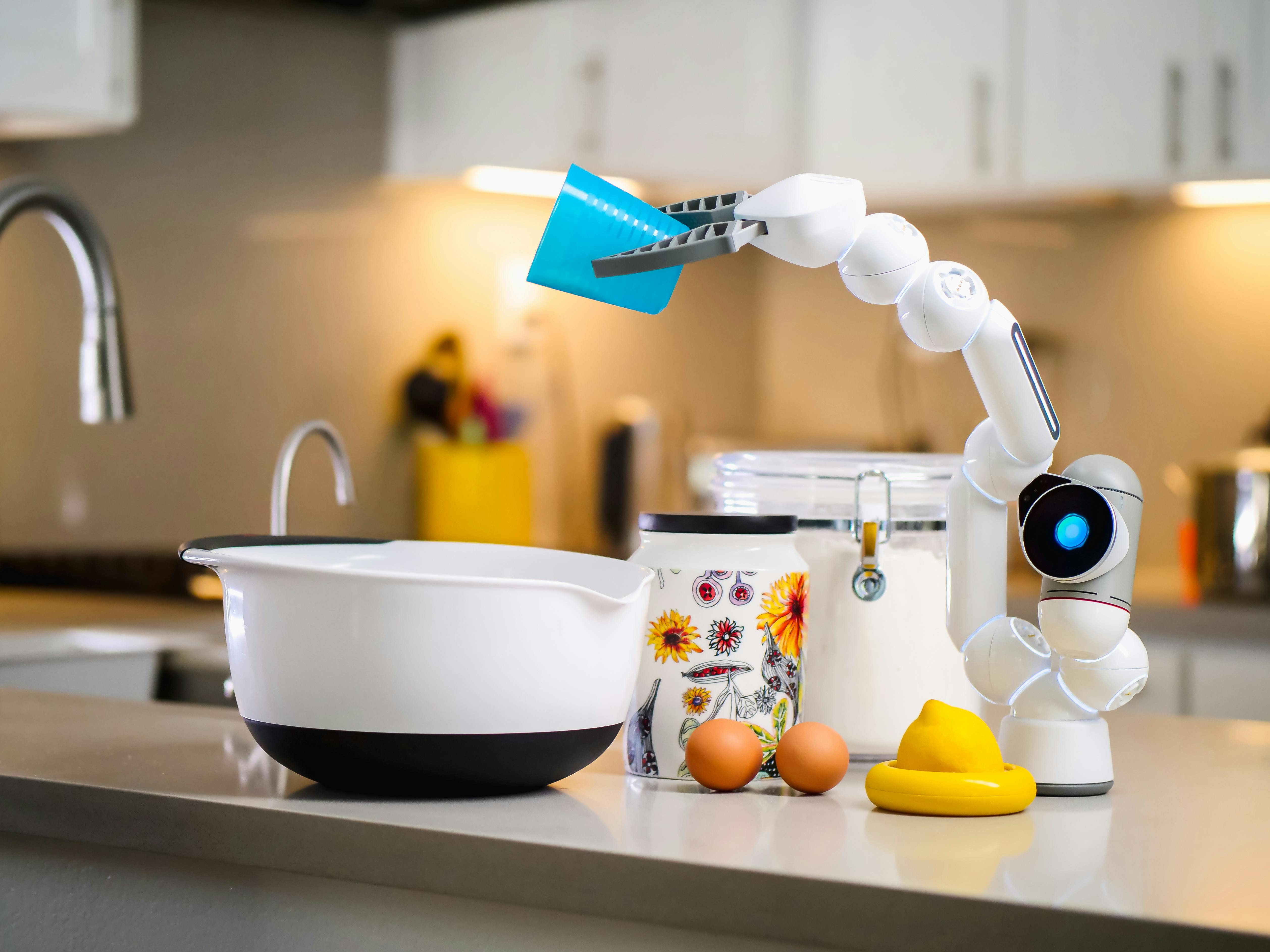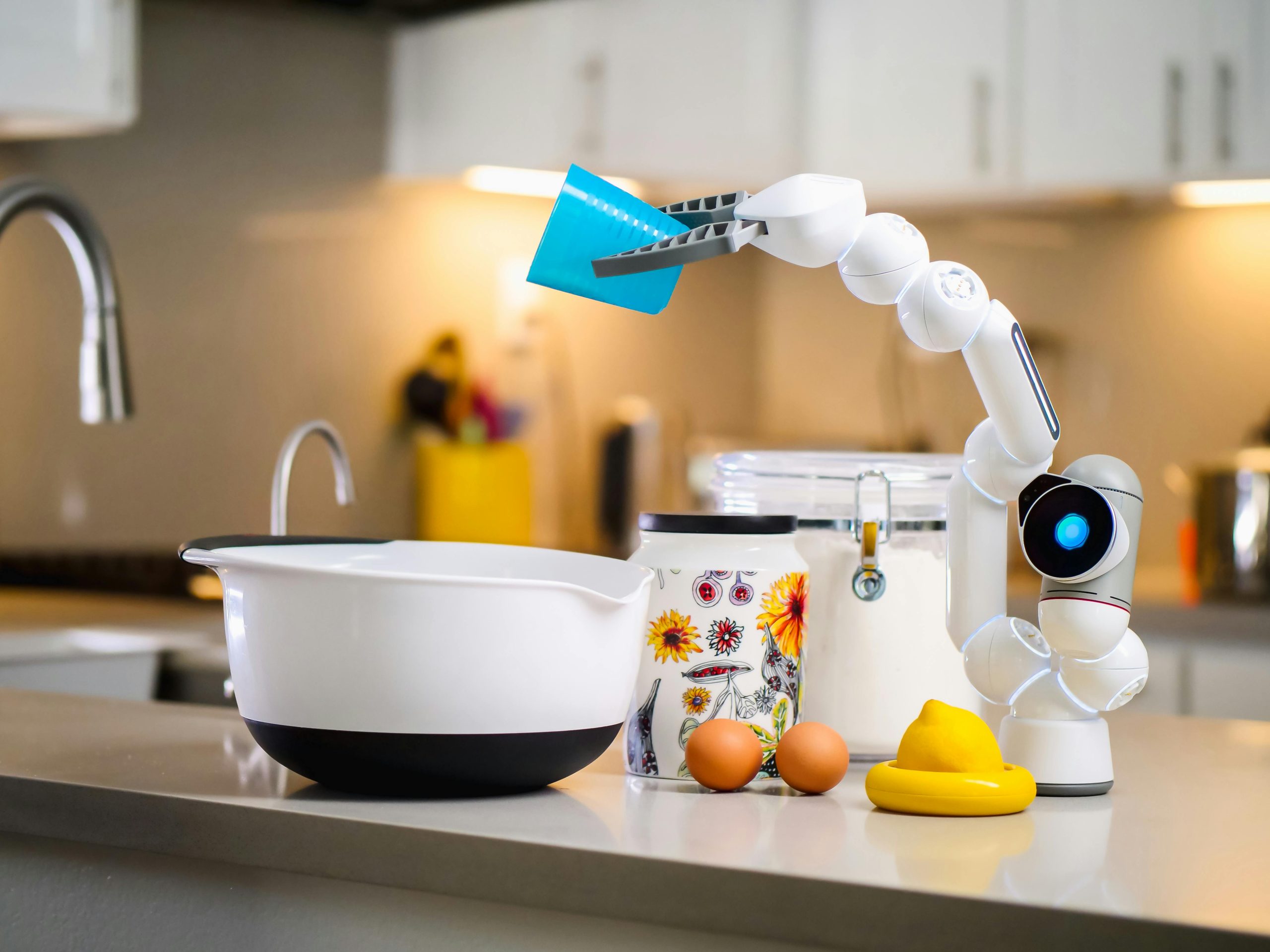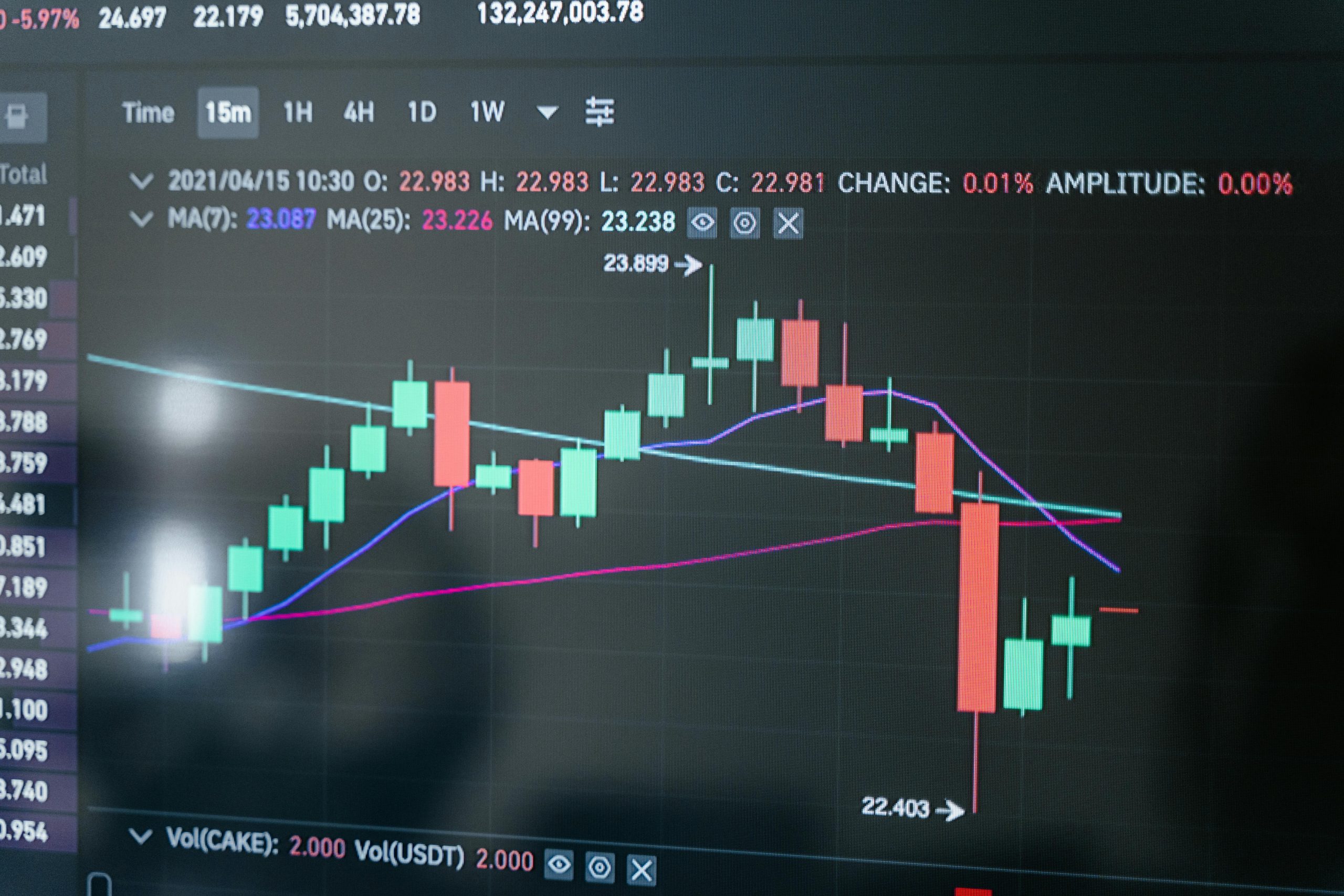The Digital Sous-Chef: How AI Moved Beyond the Novelty to Navigate the Modern Supply Chain and Kitchen

The integration of advanced artificial intelligence into daily domestic operations, particularly within the realm of culinary preparation, has shifted rapidly from theoretical exploration to practical implementation in the mid-2020s. While initial public engagement often centered on novelty or conversational capabilities, the true value proposition is emerging in complex logistical and creative problem-solving domains. By leveraging the deepening capabilities of Large Language Models (LLMs) and agentic AI frameworks, these systems are now proving indispensable in areas that historically demanded significant human executive function: navigating global supply chains, minimizing resource waste, and dynamically troubleshooting cooking techniques. The story of an individual initially skeptical of this technology reveals a pragmatic acceptance based on measurable efficiencies and a newly established baseline for domestic management.
Streamlining the Supply Chain: AI as a Global Grocery Navigator
One of the most immediate and unexpectedly profound applications of the AI assistant arose from the author’s itinerant lifestyle as a digital nomad. Cooking abroad often means navigating unfamiliar marketplaces, ingredient naming conventions, and linguistic barriers, transforming a simple shopping trip into an exhausting exercise in trial and error. The AI proved uniquely suited to bridge this gap, especially in a dense, culturally rich urban environment like Seoul. As of 2025, advances in neural machine translation (NMT) and specialized AI modules have made on-the-fly contextual assistance remarkably reliable, mirroring retail sector trends where AI interpretation tools are already deployed in Korean retail environments to aid foreign shoppers.
Navigating Exotic Markets with Translated Prompts
The logistical challenge of sourcing specific items for a planned dish across multiple, geographically dispersed food markets was significantly mitigated. Instead of relying solely on clumsy, real-time translation apps or pointing vaguely at produce, the AI provided pre-emptive linguistic assistance. A user could input the desired ingredient—say, a specific cut of meat or a niche herb—and the AI would furnish the precise term to use in the local script. This capability is rooted in the increasing sophistication of models that understand context, moving beyond word-for-word translation to provide culturally and technically accurate terminology. More critically, it offered contextually relevant substitution guidance. If an exact match for a Western ingredient was unavailable in the local specialty vendor’s inventory, the system could suggest the closest functional analog available in that specific culinary geography. This forced users to consider ingredients not in isolation but as part of a synergistic group, leveraging the AI’s vast dataset of flavor pairings to create something greater than the sum of its parts, echoing how major food corporations utilize AI to suggest ingredient substitutions during supply chain disruptions. This transformed the hunt from a frustrating scavenger mission into an informed expedition, allowing the user to shop with confidence and efficiency across several distinct retail environments within the city sprawl.
Generating Comprehensive Shopping Manifests
The most time-consuming element of weekly cooking, bar none, is the creation of an accurate, optimized grocery list. Traditional methods often result in either glaring omissions or substantial over-purchasing. The AI, once provided with a full week’s worth of planned meals, demonstrated an almost flawless ability to collate these requirements into a single, consolidated manifest. This list served as an indispensable blueprint for the purchasing phase. Furthermore, in the quest to maximize efficiency and minimize the back-and-forth of the shopping experience, the AI could be prompted to organize this manifest according to the typical layout of a specific type of supermarket or local market cluster. This organizational utility transforms the time spent in the store, turning what was once a meandering route fueled by memory into a focused, linear path toward checkout, ensuring every necessary item is accounted for before the trip begins. This logistical precision is where the AI excels, offering a level of systematic organization that frequently eludes even the most organized human planner, with up to 40% of consumers anticipating using AI tools for grocery list optimization by 2030.
Culinary Creativity Under Constraint: Waste Reduction and Ingredient Mastery
A significant driver for embracing AI in the kitchen, particularly for those living alone, is the persistent problem of perishable food waste. The well-intentioned purchase of fresh vegetables often leads to a collection of forlorn ingredients languishing in the crisper drawer by the end of the week. The AI demonstrated an almost immediate capacity to act as a culinary archaeologist, tasked with excavating value from near-expired components. This focus on waste reduction is an area where AI is directly applied in the broader food industry in 2025, helping firms manage inventory and reduce loss.
The Last-Ditch Recipe Rescue
When faced with a small, disparate collection of ingredients—a half-head of purple cabbage, a handful of cilantro, some leftover carrots from a previous dish—the human mind often defaults to simple, uninspired uses or, worse, disposal. The AI, conversely, excels at combinatorial problem-solving within a culinary framework. Given this precise inventory, alongside pantry staples like ginger, soy sauce, and frozen protein, the system was able to synthesize a completely novel, ethnically inspired recipe that unified the disparate elements. In one instance, a mix of Korean-style leftovers and Japanese staples were transmuted into a coherent, flavorful Vietnamese-inspired noodle creation. This ability to generate a logical, tasty solution from a set of apparently incompatible remnants not only saved money and reduced the ecological footprint but also expanded the user’s repertoire with entirely new dishes that might never have been conceived through traditional recipe searching. Experts note that AI tools are particularly adept at suggesting recipes based on what is already on hand, directly combating household food waste.
A Deep Dive into Ingredient Optimization
This concept of optimization extends beyond simple waste reduction; it touches upon maximizing the flavor profile of a given set of resources. By presenting the AI with a specific collection of items—for instance, a protein, a handful of vegetables nearing their end, and a base starch—the resulting meal plan became an exercise in resource allocation. The AI’s suggestions often incorporated techniques specifically designed to coax the maximum flavor from ingredients that might otherwise taste muted or overly pungent due to over-ripeness. This forced the user to consider ingredients not in isolation, but as a synergistic group, leveraging the AI’s vast dataset of flavor pairings to create something greater than the sum of its parts. It became a tool for stretching budgetary limits by ensuring that every purchased item served its full purpose across multiple meals, rather than spoiling halfway through the week’s plan.
The Interactive Kitchen: Negotiating Technique with Artificial Intelligence
The relationship with the AI quickly evolved beyond mere data retrieval into a dynamic, back-and-forth negotiation over technique and method. The AI, drawing from millions of documented recipes, presents a statistically validated path to a dish. However, a seasoned, albeit skeptical, cook knows that context—the specific pan, the exact humidity, the slightly different sourcing of an ingredient—can necessitate deviation. The core functionality of modern LLMs is their capacity for this contextual adaptation.
Questioning Pre-programmed Cooking Paradigms
The most rewarding interactions occurred when the user felt confident enough in their own intuition to challenge the AI’s suggested sequence of operations. For example, in preparing a richly flavored minced chicken dish, the AI might advise cooking the protein first, removing it from the pan, and then sautéing the aromatics (ginger and garlic) before reintroducing the meat. This standard method preserves the clean flavor of the aromatics. However, the user, possessing a hunch that a deeper, more savory base flavor could be achieved, asked if adding the aromatics first to infuse the cooking oil before the protein was added would yield a superior result. The AI, rather than rigidly defending its initial output, confirmed that this alternative approach was indeed valid, often providing the chemical rationale for why the user’s intuition was correct under different flavoring goals. This confirmed that the AI could serve as an objective sounding board for hypotheses, not just a rigid instruction manual. This capability showcases the shift toward agentic AI, which can traverse multistep chains of actions enabled by reasoning models, moving beyond simple instruction following.
Adapting to Real-World Kitchen Constraints
Real cooking is messy, and equipment is often temperamental. An AI-generated plan assumes ideal conditions. When real-world variables interfere—the grill runs out of propane, or the induction burner fails to achieve the necessary sear—the assistant must pivot instantly. A request to cook shrimp, originally slated for the outdoor grill, suddenly required an indoor solution that wouldn’t permeate the entire apartment with a heavy, pervasive fish odor. The AI immediately offered alternatives focused on low-odor stovetop methods, such as poaching or very light pan-searing with specific deglazing techniques, demonstrating its adaptability to unexpected material limitations. This capacity to troubleshoot in real-time, adjusting the how without sacrificing the what, cemented its role as a genuine operational partner rather than a static database.
Beyond the Recipe Card: The Unburdening of Cognitive Load
Perhaps the most compelling, and least anticipated, benefit of outsourcing the meal planning process was the psychological dividend. The constant, low-grade mental taxation associated with daily decision-making—what to eat, what to buy, what to cook—was significantly reduced, freeing up valuable mental resources for other pursuits. This reduction in decision fatigue is a core documented benefit of AI meal planning in 2025.
The Hidden Gift: Reclaiming Mental Bandwidth
For many adults, the cycle of deciding, planning, shopping, and executing three main meals a day, seven days a week, amounts to an unseen, unpaid second job. This relentless series of minor choices creates decision fatigue that bleeds into more important areas of life. By effectively delegating the entire planning phase—the hours spent scrolling through food blogs, comparing prices, and cross-referencing recipes—the author experienced a palpable lightening of mental weight. Eating well ceased to feel like a constant, energy-draining obligation and began to feel, paradoxically, like a gift given to one’s future self each day. This freedom allowed the cognitive energy previously spent on menu engineering to be redirected toward creative professional work, deeper engagement with hobbies, or simply more restful downtime.
The Surprisingly Thoughtful Interrogation
The path to this reduction in load was paved by the AI’s initial engagement. Unlike a simple recipe search engine, the advanced conversational models of 2025 actively engaged in a form of digital discovery. They didn’t just accept a vague command; they initiated a dialogue that mimicked the careful consultation one might have with a knowledgeable friend or a human planner. Asking about preferred flavor profiles, tolerance for complexity, and even specific snack habits signaled an attempt at crafting a truly bespoke system. This preliminary information gathering was crucial; it ensured the resulting output was not a generic suggestion but a curated list tailored to the user’s actual life, budget, and preferences, making the final plan immediately actionable and reducing the internal friction required for acceptance.
The Shadow Side of Seamlessness: Validating AI Output and Ethical Concerns
Even as the utility of the AI assistant became clear, the underlying skepticism mandated a rigorous, ongoing audit of its suggestions. Relying on technology that is known to occasionally produce falsehoods or operate without full transparency carries inherent risks, especially when those outputs directly affect personal health and financial well-being.
The Misinformation Minefield
A central tenet of AI use, especially in 2025, is the necessity of treating its output as a draft requiring human review. The very mechanism by which these systems function—synthesizing existing data from the web—means they are equally adept at replicating established fact as they are at seamlessly replicating well-articulated falsehoods. For a nutritionist, for instance, an AI might confidently generate a diet plan based on flawed or outdated health premises simply because that information is abundant in its training data. Therefore, while the AI can generate a recipe, the user remains the final arbiter of its scientific and nutritional validity. This requires the retention of basic domain knowledge to spot glaring errors, lest the convenience lead to genuinely poor lifestyle choices. Furthermore, studies of general-use chatbots often reveal a significant error rate in routine tasks, necessitating human oversight to correct inaccuracies in ingredient ratios or procedural steps.
The Hidden Environmental Ledger
Furthermore, the ease of generating extensive meal plans and detailed shopping lists belies a significant, often overlooked, external cost. The operation of these massive computational models is far from benign. Contemporary reporting has highlighted the substantial environmental footprint associated with the constant querying and processing required to maintain these services, specifically citing the massive water usage required for cooling the server farms that power the algorithms. Estimates from early 2025 suggest that global data centers are expected to consume around 560 billion liters of water annually, a figure projected to double by 2030 as AI workloads increase. Moreover, this water is often lost to evaporation, with data centers typically returning only about 20% of withdrawn water for treatment. An individual asking for a simple one-hundred-word paragraph might inadvertently be responsible for a significant volume of water consumption—some estimates suggest a single GPT-3 prompt consumes approximately 0.322 mL of water. This forces the user to confront the ethical dilemma: does the convenience gained in the kitchen justify an unadvertised, resource-intensive external cost? This awareness necessitates a conscious decision to use the tool judiciously, rather than incessantly.
Nutritional Guardrails and Professional Oversight
The critique from qualified health professionals served as a stark warning. When subjected to scrutiny by a registered dietitian, AI-generated meal plans—even those generated after careful input—were found to sometimes lack essential macronutrient balance. The system might prioritize ease or flavor profiles gleaned from popular (but not necessarily healthy) online sources, resulting in plans deficient in necessary vitamins, minerals, or essential complex carbohydrates. A plan might be technically gluten-free or dairy-free, yet fundamentally inadequate for long-term health. This realization underscores a critical boundary: the AI is a superb logistical and creative organizer, but it must never be mistaken for a substitute for certified medical or nutritional guidance when dealing with specific health goals or diagnosed conditions. Nutrition experts emphasize that while AI streamlines planning, it is not a replacement for professional clinical assessment.
The Problem of Omitted Staples
The practical execution of the AI’s beautifully structured grocery manifest revealed another frustrating flaw. The system was exceptionally good at listing the specific ingredients for the planned recipes—the ground turkey, the specific vegetables, the unique sauces—but often neglected the foundational building blocks of any kitchen. Items like cooking oils, salt, pepper, or basic dairy substitutes, which are assumed to be present in any functional pantry, were routinely omitted from the final, itemized list. This resulted in mid-recipe scrambling, requiring the cook to stop, consult their intuition, and make an emergency run for a forgotten staple like butter or bread. This highlights the gap between the digital representation of a meal and the physical reality of execution, demonstrating that algorithmic efficiency is still hampered by a lack of true sensory, environmental awareness.
Establishing a New Baseline for Domestic Efficiency
Despite the enumerated pitfalls and the nagging philosophical concerns about ceded agency, the author has reached a point of pragmatic acceptance. The utility offered by the AI assistant in the realm of domestic logistics has permanently altered the baseline expectation for how efficiently one can manage the necessities of daily sustenance. The integration of AI into household management is now being analyzed as a necessary component for modern efficiency, similar to how large corporations are adopting agentic AI to manage complex workflows.
Establishing a New Baseline for Domestic Efficiency
The luxury of effortless planning is now a standard against which previous, more arduous methods are measured. The ability to reliably conjure a week’s worth of varied, tailored meals with minimal effort represents a paradigm shift in managing household responsibilities. The tedious, repetitive mental labor of menu planning has been largely outsourced, creating a new equilibrium where cooking remains an enjoyable activity, rather than an obligation perpetually preceded by exhaustive administrative work. This is not a total replacement of the human element, but a robust delegation of the most mentally draining preparatory tasks. For the modern, busy individual, this efficiency gain often outweighs the initial skepticism, especially when the tool is used with an informed, critical eye. The growth of dedicated AI-powered meal planning software in 2025 underscores this trend toward efficiency-driven adoption.
The Evolving Partnership: A Skeptic’s Endorsement and the Future of Domestic Tech
The final verdict reflects a complex synthesis: the initial fear of technological takeover has subsided into a more nuanced appreciation for an immensely powerful, yet flawed, collaborator. The relationship is a hybrid model, a partnership where the machine handles the heavy lifting of data synthesis and logistical mapping, while the human retains the critical role of taste-tester, ethical overseer, and final arbiter of quality. This model aligns with the projected future of commerce, where AI agents act on human intent but require human alignment to build trust.
Maintaining the Human Element
The path forward involves conscious preservation of the human touch. It is crucial to maintain the skepticism that initially prompted the entire experiment, using it as a lever to push the AI toward better, more context-aware outputs. This means actively inserting one’s own judgment, adjusting quantities, swapping out suggested techniques for preferred ones, and most importantly, utilizing the AI as a starting point, not a final decree. The AI serves as an incredible springboard for creativity—a source of structured inspiration—but the unique joy, intuition, and personal flavor of a dish must remain firmly rooted in the human hands that hold the knife and adjust the seasoning. It is a sous chef that requires constant, intelligent supervision, ensuring that while the technology enhances the process, it never fully consumes the inherent pleasure of creation. The wariness about broader societal impacts has not evaporated, but in the personal sphere of the kitchen, a productive, albeit cautious, alliance has clearly been forged, ensuring the digital assistant remains a servant of the user’s intent, not the master of their plate.










